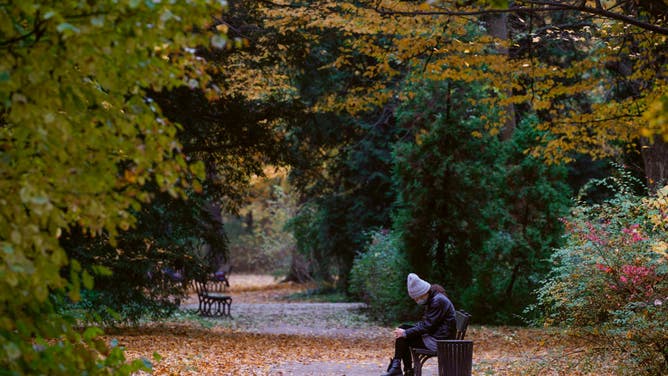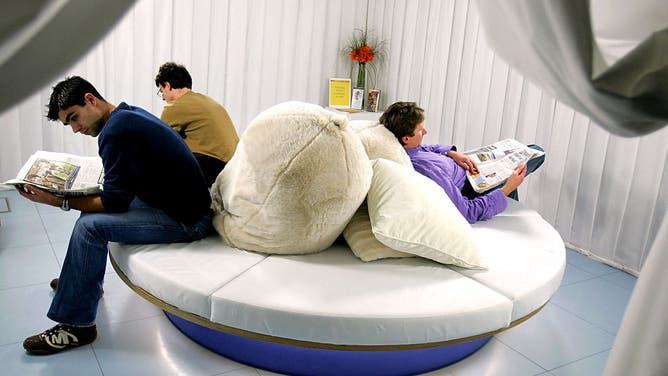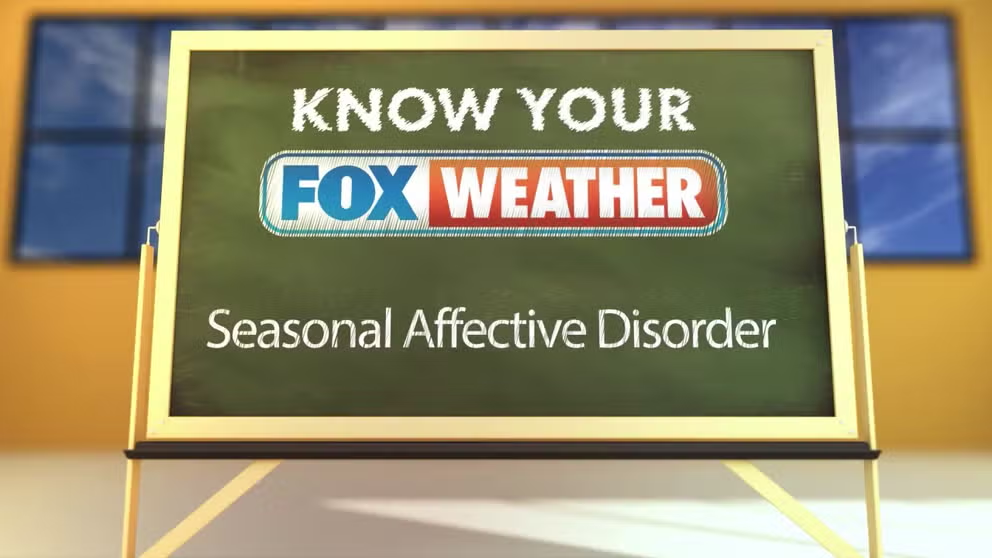First signs of gloomy winter weather can trigger seasonal depression, seasonal affective disorder
Treatment methods for season depression include light boxes, sitting in sunlight when possible and getting physical activity.
What is seasonal affective disorder?
FOX Weather Meteorologist Kiyana Lewis explains the signs and symptoms of seasonal affective disorder, also known as SAD.
Colder weather, less daylight and seasonal changes can affect your overall mood, leading to depression or seasonal affective disorder, also known as SAD, affecting about 11 million across the U.S. annually.
Seasonal affective disorder can begin with the first signs of fall or winter, including cooler temperatures and less daylight as we approach the year's shortest days.
WebMD Chief Medical Officer Dr. John Whyte said the rounds of rain across the Northeast may have people feeling the seasonal blues earlier this year.
"With all this rain in certain areas of the country, I'm not surprised that people are starting to feel down and depressed now rather than, you know, in a few more weeks or months," Whyte said.
HOW TO RECOGNIZE SEASONAL AFFECTIVE DISORDER AS WINTER APPROACHES
Doctors are still trying to understand all elements of SAD, including why some people suffer from it and others do not. Whyte said it is likely triggered by a hormonal imbalance. As people are exposed to less sunlight, it affects the levels of melatonin and, in turn, disrupts sleep, causing other symptoms of seasonal depression.
"If you suffer from seasonal affective disorder. Your melatonin, your serotonin, your cortisol levels are out of balance, and that's changing your mood and making you feel tired, depressed, sad, losing weight, no interest in things," Whyte said. "It's not in your head. There's a reason why, physiologically, and in your brain, that you're feeling these emotions."
What are the symptoms of seasonal depression?
It's important to know that the "winter blues" could be a diagnosable seasonal affective disorder, and knowing the signs can help combat negative feelings.

File photo: A woman is seen sitting on a bench n the Royal Baths park in Warsaw, Poland on October 31, 2020. (Photo by Jaap Arriens/NurPhoto via Getty Images)
Lack of appetite, weight loss, overall changes in your mood, feelings of sadness and lack of sleep are all signs of seasonal depression. To find out if what you are experiencing is SAD, there are self-assessments online that can help identify it.
According to D'AMORE Health, about 5% of the population, or 1 in 50 people, suffers from seasonal depression.
What are the treatments for SAD?
Whyte said a healthy diet and exercise can go a long way to treating seasonal depression.
"Physical activity always releases those endorphins that make us feel good. So that's going to help your mood in the first place," Whyte said.

2006 File photo: Visitors sit in the Light Lounge, an ambient white space containing four specially designed light boxes where visitors can relax and have light therapy, in the Science Museum's Dana Centre in London, 10 January 2006. Light therapy is used to help combat SAD (Seasonal Affective Disorder) which affects 1 in 50 people during the darker months of the year. (Photo by JOHN D MCHUGH/AFP via Getty Images)
(Getty Images)
Other treatments include using a light box to replicate the vitamin D-producing sunlight your body needs.
"It's not just going in a room and turning the lights on," Whyte said.
WHERE THE SUN IS NO LONGER PROVIDING ENOUGH VITAMIN D UNTIL NEXT SPRING
According to the Yale School of Medicine, exposure to bright light at 10,000 lux seven days a week for 30 minutes before 8 a.m. can help improve SAD symptoms for most patients.
Getting natural sunlight when possible is also another treatment. This can be sitting by a sunny window or outside for a little while.
"The key is that sunlight, that light that's going to help address your mood," Whyte said.
Meanwhile, others will need professional help in addition to the treatment options listed above. A psychologist or psychiatrist will help determine a treatment plan and any possible medication.
Too much sunlight can also cause seasonal depression
Seasonal affective disorder also happens as a result of too much sunlight. Starting in spring, nearly 2 million people experience summer blues when daylight lasts 10 to 12 hours. Most of these patients are closer to the equator, and symptoms can include feeling agitated and anxious, having no appetite, weight loss, having trouble sleeping, and violent or explosive behavior.
